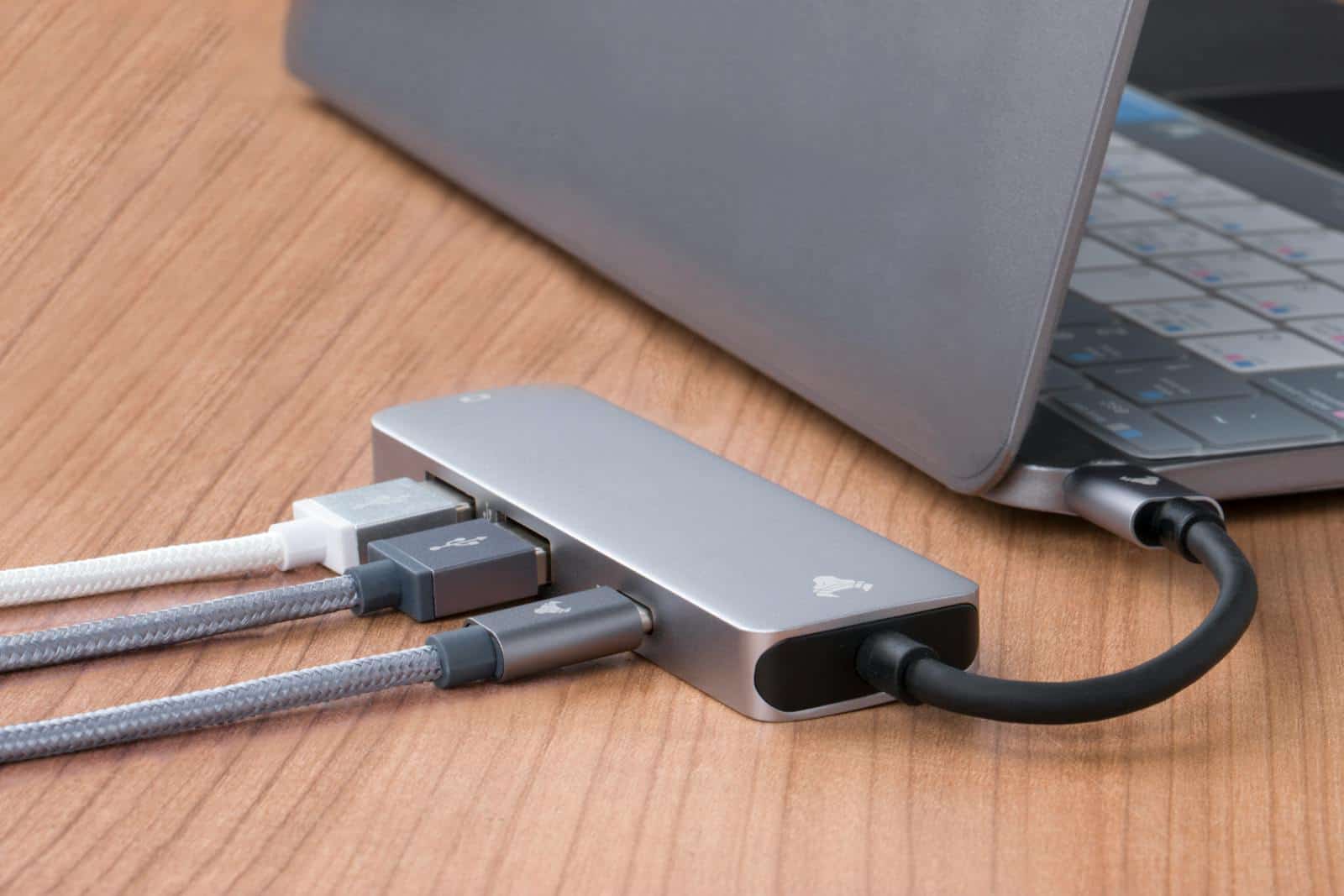USB ports are essential for connecting various devices to computers. Many users find themselves needing more ports than their machines offer. Adding USB ports to your computer is a simple process that can greatly expand your device connectivity options.
There are several ways to increase the number of USB ports on your computer. USB hubs are the easiest solution, allowing you to connect multiple devices to a single port. For laptops, docking stations provide extra ports along with other connectivity options. Desktop users can install internal USB cards for a permanent solution.
Choosing the right method depends on your specific needs and computer type. Consider factors such as portability, power requirements, and the number of additional ports needed. With the right approach, you can easily overcome USB port limitations and connect all your devices simultaneously.
Expanding Your Connections: Adding More USB Ports
In today’s world of tech gadgets and peripherals, it’s easy to run out of USB ports on your computer. Whether you need to connect more devices or simply want easier access to ports, there are several ways to expand your USB connectivity. Here’s a guide to help you add more USB ports to your computer.
1. USB Hubs
USB hubs are the simplest and most common way to add more USB ports. They come in various shapes and sizes, offering a range of port counts and features. Simply plug the hub into an existing USB port on your computer, and you instantly have multiple new ports available.
- Powered vs. Unpowered: Powered hubs have their own power adapter, providing sufficient power for high-demand devices like external hard drives. Unpowered hubs draw power from your computer, which may be limiting for some devices.
- USB Version: Ensure the hub supports the USB version you need (USB 3.0, 3.1, 3.2) for optimal data transfer speeds.
2. Expansion Cards
If you need a more permanent solution or require specific types of USB ports, consider installing an expansion card. These cards plug into a PCIe slot inside your computer and provide additional USB ports, often with advanced features.
- Internal vs. External: Internal expansion cards are installed inside your computer case. External expansion cards connect via a cable, offering more flexibility.
- Port Types: Expansion cards can provide various USB port types, including USB-A, USB-C, and even legacy ports like USB 2.0.
3. Docking Stations
Docking stations are particularly useful for laptops. They provide a centralized hub for connecting multiple peripherals, including USB devices, displays, and network cables. Many docking stations also offer charging capabilities for your laptop.
4. Front Panel Expansion
If your computer case has empty front panel bays, you can install expansion bays that provide additional USB ports and other connectivity options like card readers or audio jacks.
5. Motherboard Headers
Some motherboards have internal USB headers that you can connect to expansion bays or adapters to add more USB ports to the front or rear of your computer case.
Choosing the Right Solution
The best way to add USB ports depends on your needs and budget. Consider the following factors:
- Number of Ports: How many additional ports do you need?
- USB Version: Do you need the latest USB standards for high-speed data transfer?
- Power Requirements: Will you be connecting power-hungry devices?
- Portability: Do you need a portable solution for a laptop?
- Budget: USB hubs are generally the most affordable option, while expansion cards and docking stations can be more expensive.
Here’s a table summarizing the different ways to add USB ports:
| Method | Description | Pros | Cons |
|---|---|---|---|
| USB Hub | Connects to an existing USB port | Simple, portable, affordable | May have power limitations |
| Expansion Card | Plugs into a PCIe slot | More ports, advanced features | Requires installation |
| Docking Station | Central hub for laptops | Multiple ports, charging capabilities | Can be expensive |
| Front Panel Expansion | Installs in a front panel bay | Convenient access to ports | Limited by case availability |
| Motherboard Headers | Connects to internal headers | Adds ports to front or rear | Requires compatible hardware |
Key Takeaways
- USB hubs offer a quick and easy way to add ports to any computer
- Docking stations provide multiple connectivity options for laptops
- Internal USB cards offer a permanent solution for desktop computers
Understanding USB Technology and Requirements
Do you find yourself constantly running out of USB ports on your computer? With the proliferation of devices and peripherals, it’s a common problem. Thankfully, there are several ways to expand your USB connectivity. This article explores different methods for adding more USB ports to your computer, from simple USB hubs to more advanced options like expansion cards and docking stations.
USB technology has evolved significantly, offering various port types with different capabilities. Assessing your current setup and understanding compatibility issues are crucial steps in expanding your computer’s USB ports.
Types of USB Ports and Their Capabilities
USB ports come in several versions, each with distinct transfer speeds and power capabilities. USB 2.0 offers speeds up to 480 Mbps, while USB 3.0 and 3.1 provide much faster data transfer rates.
USB 3.0 can transfer data at up to 5 Gbps. USB 3.1 Gen 2 pushes this further to 10 Gbps. The newer USB 3.2 standard supports speeds up to 20 Gbps.
Port shapes also vary. Type-A is the classic rectangular port. Type-C is smaller and reversible, becoming increasingly common on modern devices.
Here’s a quick comparison:
- USB 2.0: 480 Mbps
- USB 3.0/3.1 Gen 1: 5 Gbps
- USB 3.1 Gen 2: 10 Gbps
- USB 3.2: Up to 20 Gbps
Assessing Your Current Setup and Expansion Needs
Before adding USB ports, users should evaluate their current setup. Count the available ports and identify their types. Consider the devices that need to be connected regularly.
Common USB devices include:
- External hard drives
- Printers
- Keyboards
- Mice
- Smartphones
Determine if more ports are needed for simultaneous device connections. Consider the speed requirements for data transfer tasks.
For laptops with limited built-in ports, USB hubs or docking stations can be effective solutions. Desktop computers might benefit from internal expansion cards.
Compatibility with Operating System and Devices
Compatibility is key when adding USB ports. Most modern operating systems support USB devices natively, but older systems may require driver updates.
Windows, macOS, and Linux typically recognize USB hubs and expansion cards automatically. However, some high-speed devices may need specific drivers for optimal performance.
Check the specifications of any USB expansion solution. Ensure it’s compatible with your computer’s USB version and operating system.
For PCIe expansion cards, verify your motherboard has available slots. Some cards may require additional power connections from the PC’s power supply.
USB-C ports offer versatility but may need adapters for older devices. Consider the mix of port types when choosing expansion options.
Expanding Your USB Connectivity
Adding USB ports to your computer can significantly increase its versatility and functionality. There are several methods to achieve this, each with its own advantages depending on your specific needs and setup.
Selecting the Right USB Hub for Your Needs
USB hubs are the quickest way to expand port availability. These devices come in various sizes and configurations. When choosing a hub, consider the number of ports needed and the power requirements of connected devices.
Bus-powered hubs draw power from the computer, while self-powered hubs have their own power supply. Self-powered hubs are better for devices that need more power, like external hard drives.
USB version compatibility is crucial. USB 3.0 and higher offer faster data transfer rates, which is important for peripherals like storage devices. Some hubs include additional features such as SD card readers or Ethernet ports.
Key factors to consider:
- Number of ports
- Power source (bus-powered vs. self-powered)
- USB version (2.0, 3.0, 3.1, etc.)
- Additional features (card readers, video outputs)
Installing an Internal USB Expansion Card
For desktop computers, internal USB expansion cards provide a more permanent solution. These cards fit into PCIe slots on the motherboard, adding USB ports directly to the system.
Installation steps:
- Power off the computer and unplug it
- Open the case
- Locate an available PCIe slot
- Insert the expansion card
- Secure the card with a screw
- Close the case and reconnect power
Expansion cards often offer USB 3.0 or higher speeds. Some cards include internal headers to connect front panel USB ports. This method requires basic computer hardware knowledge but provides a clean, integrated solution.
Using External Solutions for Additional Ports
For laptops or situations where internal expansion isn’t feasible, external solutions offer flexibility. Docking stations are ideal for creating a full desktop setup, providing multiple USB ports along with video and network connections.
USB-C hubs are compact alternatives, often featuring:
- Multiple USB-A ports
- HDMI or DisplayPort outputs
- Ethernet connections
- SD card readers
These devices are plug-and-play, requiring no installation beyond connecting to an available USB port. They’re particularly useful for ultrabooks or tablets with limited built-in connectivity.
When selecting external solutions, consider the connector type (USB-A, USB-C) and ensure compatibility with your device’s USB version for optimal performance.







